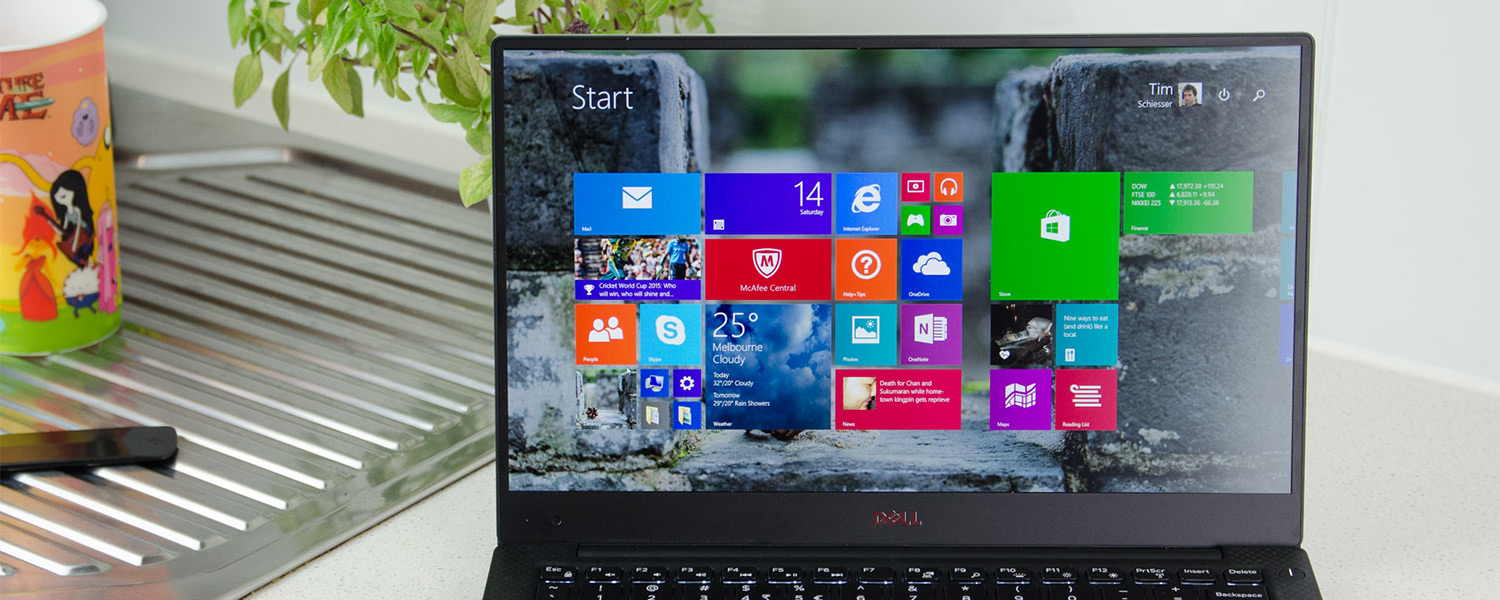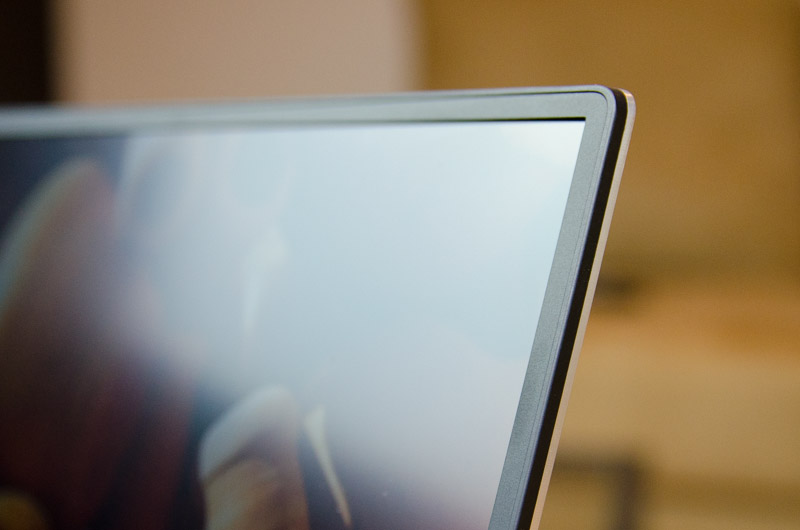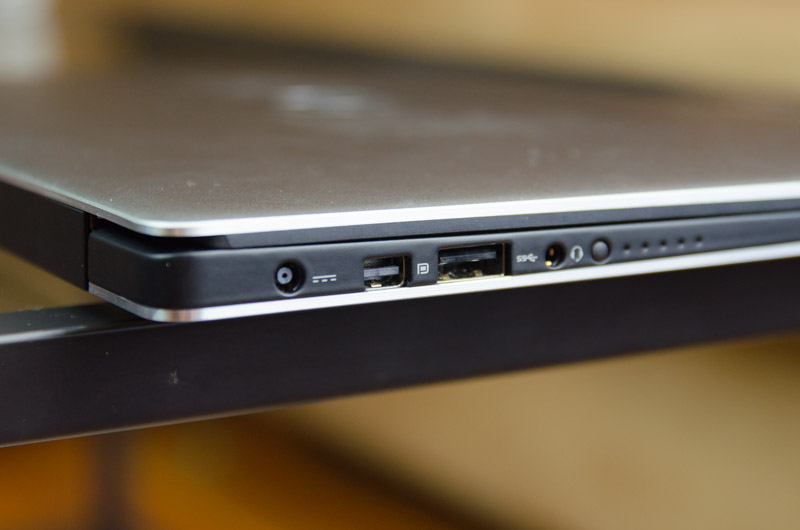The ideal Windows laptop is very hard to find. Some laptops come with beautiful designs, some are very portable, some include powerful hardware and others excellent battery life. A device that combines all of those features into one package would be truly excellent, but thanks to the usual trade-offs of past and current generation hardware, it's not something we're likely to see soon.
....or is it?
Sitting in front of me is the new Dell XPS 13, and as far as I can tell, it ticks most of the aforementioned boxes. It has a 13-inch display with a very slim bezel, making it extremely portable. The aluminium shell with a carbon fibre-style interior looks pretty darn good. Internally we're getting a new Intel Broadwell Core i5 CPU, which is just as powerful as before but more energy efficient. And battery life, at least for the 1080p model, is rated at up to 15 hours according to Dell.
The latest XPS 13 ($999 as reviewed, starts at $799) sounds like a very compelling product upon initial inspection. Unless the device doesn't live up to its claims in one way or another, Dell might just have one of the best laptops on the market. And it might finally be the laptop I can happily recommend anyone without throwing caution towards one feature or another.
For a laptop with a 13.3-inch display, the new XPS 13 is mighty small. The footprint of the XPS 13 is 12% smaller than the latest 13-inch MacBook Pro, and volume-wise it's just slightly larger than the 11-inch MacBook Air. It's not quite as light as the 11-inch Air (2.4 vs 2.6 lbs), but it still manages to beat the 13-inch model (2.98 lbs) and match the Lenovo Yoga 3 Pro in the weight department. The XPS 13 also loses out in the thinness department to these laptops, though it's still very slim in its own right (17.5mm excluding the rubber rest).
From many fronts its clear that the XPS 13 is designed to contend with, and beat, the MacBook Air. Dell claims the XPS 13 is 23% smaller than the 13-inch Macbook Air with the same display size; my math places it closer to 18%, impressive nonetheless. It has comparable internal hardware and features to Apple's thin 13-inch model, including a similar 52 Wh battery that Dell has managed to squeeze into an 11-inch frame: a frame that Apple only gives 38 Wh. It also comes with a higher resolution display, something not hard to achieve in 2015, and better rated battery life.
The model I received for review is the 1080p non-touch, though there's also a QHD+ 3200x1800 touchscreen model on offer that sacrifices some battery life and comes at a $300 premium.
How did Dell manage to squeeze a 13-inch display into something that should only accommodate 11 inches? It's all about that bezel. Dell calls their 5.2mm bezel around three sides of the display an "Infinity Display", which is going a bit overboard considering it's not actually bezel-free or borderless, but it does convey just how good the display looks.
The thin bezels makes the laptop feel like its utilizing every available inch of space to display content. It's surprising other laptop manufacturers haven't opted for a super slim bezel like this before, because it's simply awesome to view photos, watch movies or edit documents on a near borderless display. In some ways it feels futuristic, though clearly the technology is here today.
The front facing camera has had to be relocated to the larger section of bezel below the display, in the bottom left corner. This isn't an ideal location as it can create a weird angle when video chatting, though I'm happy with the trade-off for the general display experience.
On the other side of the display is a piece of clean aluminium reminiscent of Apple's laptop design. Of course it contains a Dell logo instead, and the aspect ratio is slightly different, but it has that same strong, premium feel as its MacBook counterpart. There's very little flex in the whole display assembly, despite how thin it is, and the natural metal look is visually pleasing.
The bottom of the laptop continues the trend of exposed aluminium, although it doesn't look nearly as nice as the top. Two large rubber lines clutter up this area, leaving it looking considerably less elegant. Luckily you won't see this side too often, and the rubber does provide grip for usage on a desk, and enough height that the row of cooling vents isn't inhibited. There's also a small flap on the bottom, branded with XPS, that reveals regulatory information when you lift it up. It's a clever way to hide these unsightly logos short of removing them altogether.
Around the keyboard Dell has opted for black, soft-touch carbon fiber. It's not as lovely as the aluminium lid from a visual standpoint, but it's far from a cheap look and it feels excellent to the touch. Aside from the keyboard and touchpad, the only other feature of this cleanly-designed area is the power button, which includes a pleasing strip of light to let you know the laptop is on. A second light is found on the thin rim below the trackpad that activates while charging.
The hinge on the XPS 13 is a basic one, which occupies most of the back edge of the device to keep the device slim. The range of motion is good, with the maximum angle being slightly greater than what I need for lap use. The hinge is strong as well, keeping the display at whatever angle you like even when the laptop is moved. Hidden on the body side of the hinge is a second set of vents to cool the laptop, as the Broadwell CPU requires a fan to keep cool.
As for ports, on the left side you get a basic proprietary power jack, mini-DisplayPort, USB and a 3.5mm audio jack. On the right is another USB port and an SD card reader. I like the inclusion of the SD card slot for easily copying photos from a camera, but an extra USB port would be nice.
Towards the bottom of each wedge-shaped side you'll find the side-firing speakers. They're not the best I've ever heard in a laptop, but they're good enough for watching the occasional video. Having the speakers fire towards you rather than to the sides would be a slight improvement, although covering either of the speaker ports doesn't have much of an effect on audio output.












